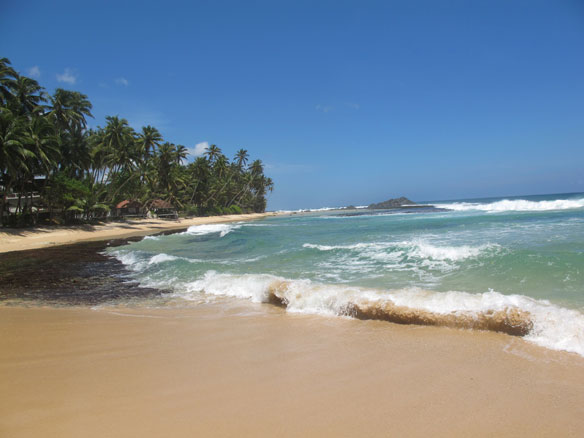
Coastal erosion, Galle, Sri Lanka. Photograph: © SAF – Coastal Care.
“Sand is the second most consumed natural resource, after water. The construction-building industry is by far the largest consumer of this finite resource. The traditional building of one average-sized house requires 200 tons of sand; a hospital requires 3,000 tons of sand; each kilometer of highway built requires 30,000 tons of sand… A nuclear plant, a staggering 12 million tons of sand…” Captions by “Sand Wars” Multi-Awards Winning Filmmaker: © Denis Delestrac (2013).
Excerpts;
Excessive sand mining activities in the Maha Oya river had caused reduction of sand supply to the coastline, breaking the natural sand equilibrium of the beaches, a study reveals.
The coastal stretch from Negombo to Chilaw has been identified as the most eroded coastline in Sri Lanka, of which between 80 and 85 per cent of the degradation is attributed to exacerbated sand mining in the Maha Oya…
Read Full Article, The Sunday Leader News (07-10-2016)
Let’s Talk About Sand: Denis Delestrac At TEDxBarcelona (12-2013)
Sand, Rarer Than One Thinks: A UNEP report (GEA-March 2014)
Despite the colossal quantities of sand and gravel being used, our increasing dependence on them and the significant impact that their extraction has on the environment, this issue has been mostly ignored by policy makers and remains largely unknown by the general public.
In March 2014 The United Nations released its first Report about sand mining. “Sand Wars” film documentary by Denis Delestrac – first broadcasted on the european Arte Channel, May 28th, 2013, where it became the highest rated documentary for 2013 – expressly inspired the United Nations Environment Programme (UNEP) to publish this 2014-Global Environmental Alert.
Sand Wars, An Investigation Documentary, By Multi-Award-Winning Filmmaker Denis Delestrac ©-2013.








